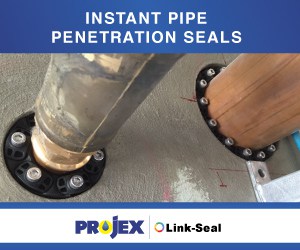by Jesse Tyler, Utility
A lack of national water industry oversight is making it difficult for industry leaders to obtain information about the workforce and to address training and skills gaps, particularly at the operator level. We spoke to industry leaders about getting training in the water industry back on track.
There were two industry audits of skills in the water industry in 2008, which predicted skill and personnel shortages by 2018.
While the landscape has likely since changed, a lack of government funding has made widespread surveying of the water sector difficult and since 2008, no comparable audit has been completed.
Compounding the problem, issues with ANZSCO coding in the 2011 census have made it difficult to determine the size of the water industry workforce. Efforts were made to resolve this for the 2016 census, though it remains to be seen if they were successful.
Nevertheless, organisations like the Australian Water Association (AWA) and Water Services Association of Australia (WSAA) are doing what they can to address both the immediate and long-term training needs of the industry.
A WSAA project underway is investigating changes affecting the water industry, such as aging staff, emerging values, new technology and changing customer expectations. The project aims to help predict future roles, skills and drivers in the workforce.
Meanwhile, the AWA provides training delivered via webinars, seminars and events, which attempts to cover the wide range of roles amongst its members.
AWA Professional Development and Training Manager, Nicola Helme, said the training aims to mix theory and real world practice and caters to a “broad church”, though the main group that submitted requests for training were water professionals.
“As a consequence, things like leadership, management and broad brush professional skills with a water industry angle are proving very popular at the moment.”
Creating a national framework
Former SA Water CEO John Ringham said that while those in professional areas – mostly university graduates – had access to training opportunities to improve their skills, operators and juniors were often not so lucky.
“The professionals get opportunities to improve their skills, either in the workplace, or through an organisation like the AWA, through seminars and conferences, or post-graduate courses. For the operators, it’s very much left up to the individual utility.
“That’s probably the area of greatest oversight, because they’re the people in the frontline, and they’re the people who everybody is relying on to get it right.”
Mr Ringham pointed to the lack of a national qualification for water treatment operators as an example of this shortfall. Most issues with water quality are caused by human error, and with a lack of formal competency requirements, Mr Ringham said it can be difficult to have assurance that operators are actually capable of performing the duties.
Mr Ringham said the lack of national qualifications also made it difficult for people to move between utilities, as there was no recognised standard against which they could be judged.
In 2012, the Water Industry Skills Taskforce (WIST) got some funding through the National Water Commission (NWC) to address this gap – to develop a national framework for training standards for drinking water treatment operators.
The implementation of the framework was identified as the number one skills priority for the water industry at the Water Industry Skills Forum in 2012.
However, when the Abbott Government closed the NWC in 2014 without creating an equivalent oversight body, saying its purpose had been fulfilled, WIST’s funding dried up and it was down to a group of volunteers.
WIST is still working on a national framework, but it is their only active project. With the framework unfinished, there is still no minimum skills and training standards for drinking water treatment operators.
WIST Chair, Dave Cameron, said the present funding environment was very challenging and people had no confidence to invest on their own.
“The Federal Government’s overall approach to water management at the moment and the loss of profile and ultimate demise of the NWC has probably put us in the situation we are in now.
“We’re running a little bit on love and sticky tape at the moment.”
A new VET system
In 2016, the Federal Government changed the Vocational Education Training system, under which new Industry Reference Committees (IRCs) must submit a business case for proposed training packages in their sector to a government body that will evaluate the cases and provide funding to some according to national priorities.
The Water IRC (WIRC), chaired by John Harris, is currently preparing a four-year plan to present to government.
The WIRC plans to resolve some issues preventing workers from undertaking the management qualification Diploma of Water Industry Operations and is gathering information on water sector issues, particularly about technology, the aging workforce, climate change, infrastructure and big data.
However, funding is not guaranteed. The available funding for training package development for all SSOs in Australia over four years is $35.8 million, and $13.3 million for additional training activities.
Mr Harris said when considering government cutbacks on these types of projects, and the competition from 75 other IRCs, there was a real possibility the funding wouldn’t happen and the training package wouldn’t be implemented.
Mr Harris said the industry really missed the NWC, as it had a direct link to the Federal Government and had been a real driver for funding.
“We got $1.2 million dollars from the NWC to develop the first lot of learning resources, which was then sold off to Registered Training Organisations (RTOs), so it became a standard across Australia. That hasn’t been updated to match the new qualifications.
“That was the advantage of the NWC – it was seen as a link to the COAG group; it was the be all and end all.”
Looking forward
Despite funding restrictions, WIST is trying to survive to finish the operator framework and keep industry training on track.
Mr Cameron said the lack of extensive water industry auditing needed to be addressed in order to plan for the future.
“But if we let the skills taskforce lapse we’re not going to be in a very good position if an opportunity comes up.”
Mr Harris said the 2016 census should give a better idea of the size of the workforce, as WSAA worked with the ANZSCO group to identify career paths in the water industry.
“This last census was the first time that people have put down that they’re water networks operators.”
WIST’s recommendations for implementing its framework include mandatory national adoption, an owning government department or agency, and a certifying body (Water Industry Operators Association of Australia) to maintain the framework.
Mr Harris said the goal was for the framework to be a national standard, though the industry was likely heading toward a self-funding training model under organisations like WSAA and AWA.
However, Mr Ringham said that a recognised RTO would be needed to oversee the framework to ensure national recognition. If the water industry as a whole could come to an agreement on what was required, a national framework wouldn’t necessarily require legislation to deliver the training.
However, to make the training a requirement – rather than just guidelines – would be more difficult. “It may well require legislation in order to pull every organisation into line,” Mr Ringham said.
Mr Ringham said the NWC was effective because while it had a “few carrots”, it also had a “large stick”, and Australia might need a similar national body to oversee training across the water sector and to plan for the future.
“The main issue about not having a national body that is driving the policy and direction is that water, which is an essential for life and for economic growth, drops off the political agenda and therefore becomes less important, and less well-funded.”
Mr Ringham said there should also be closer links between industry skill needs and setting the curriculum at universities and schools, as well as more investment in training the workforce through industry traineeships, cadetships, apprenticeships and sponsored graduates.
“The industry needs to become more innovative and be prepared to assess and take some risk,” Mr Ringham said.














